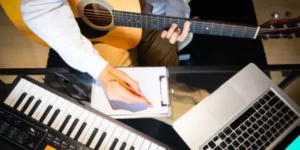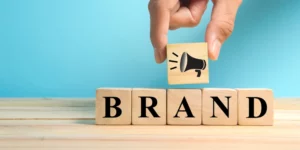When you start recording a podcast with an amplifier while studying from the content or catching an interview, consider things in your current situation that may make noise. Use earphones to screen your recording. Turn them up to tune in to what the amplifier is hearing before you start delivering or meeting—trying to limit any other noise however much as could be expected. A cleaner recording with balanced podcast audio levels will be simpler to deal with later on simultaneously.
The industry standard of podcast audio level
The business standard for a podcast audio level is between -16 and -18 LUFS. In any case, to estimate your podcast audio in LUFS, you will require a meter that will quantify in LUFS. Most VU meters measure sound in DBS. LUFS is a unit of loudness measurement, or as such, how loud your podcast is by all accounts to the audience.
So how would you measure your podcast production recording in LUFS? There is a basic fix. You can download a module into your DAW that will do only this. A module is only an essential piece of programming that will allow you to have an additional meter to use it too loud for your sound in LUFS.
Find space around you
It’s also difficult to consider the noise of the space you’re in. Hard level surfaces reflect sound like a mirror mirrors light. Leave room around you and your receiver to limit early reflections. Set upon a floor covering, close to sure bookshelves, and away from walls. Likewise, maintain a strategic distance from echoing spaces. A few workplaces, homerooms, gathering rooms, and group spaces can be particularly repeated.
If you’ve been tuning in to podcast audio level for quite a while, you’ll also know the disappointment of flipping starting with one show then onto the next, or even from one scene of a similar performance to another, expanding or declining your podcast audio level.
In the best-case scenario, it isn’t enjoyable. Even from a negative standpoint, it’s sufficient to shoot your eardrums off.
A standard estimation for podcast audio level implies an excellent encounter for podcast audience members and no annoying letters for you since somebody got tinnitus from tuning in to your show.

Podcast audio levels and loudness
The main piece of completing a mixture clean is to keep your podcast audio levels steady. This is a troublesome effort to dominate, yet some fantastic guides can make it simpler. The principal thing to remember is that the cleaned audio’s essential estimation is obtained using the scale called “noise.” There’s a top to bottom clarification of the how’s and whys of using loudness here.
Many people have gotten practice to standardize their sound to try and out their levels and expectation that by expanding each maximum volume, they’ll all be in a similar loudness. In any case, on the off chance that you’re trying this, you’ll realize that customary standardization doesn’t complete this. Most normalizing measures search for sound loudness, the most intense second in a peak, and change the audio sound level to make that top as noisy as expected without twisting.
Advantages of loudness
The calmest discussion here and there is understandable. Normally, this inaudible is identified with the noise floor, not of the account, but instead of the climate, you are tuning in.
Foundation of noise, discussion, podcast background music, and particularly HVAC frameworks, influence the base levels a given sound needed to reach to be heard over these ecological noises.
Raising the audio manages the cost of us some authority over the audience experience to be heard over given natural conditions.
Podcast audio too loud or normalize
Normalize is like amplifying. However, it’s better at making the most vital sound somewhat calmer. Once more, head to effects in the full pass-through and afterward normalize.
This will change all your chosen sounds to have a similar podcast audio level. So if you set it to -3db, all your sounds will go as high as -3db in volume. A helpful device would come in handy for adjusting the importance of your sound without making everything extremely noisy.
Output file format
It would help if you recorded your unique tracks as WAV documents. Doing so will hold the best quality through the making cycle. However, WAV records are too many to even think about dispersing as a podcast, so you’ll have to “pack” them while mixing a podcast into a more professional document design: MP3 or AAC for delivering. The most well-known record design is MP3, which is as yet the most broadly upheld by all gadgets that can play podcast recordings
Conclusion
It isn’t easy to loud the yield volume of your podcast with the goal that you can match with the business standard audio level of -16 and -18 LUFS. To do so, you will require a VU meter that can quantify LUFS, similar to the YouLean din meter. So make sure that you’re delivering your podcast recordings at the correct sound level to keep your audience members glad.





